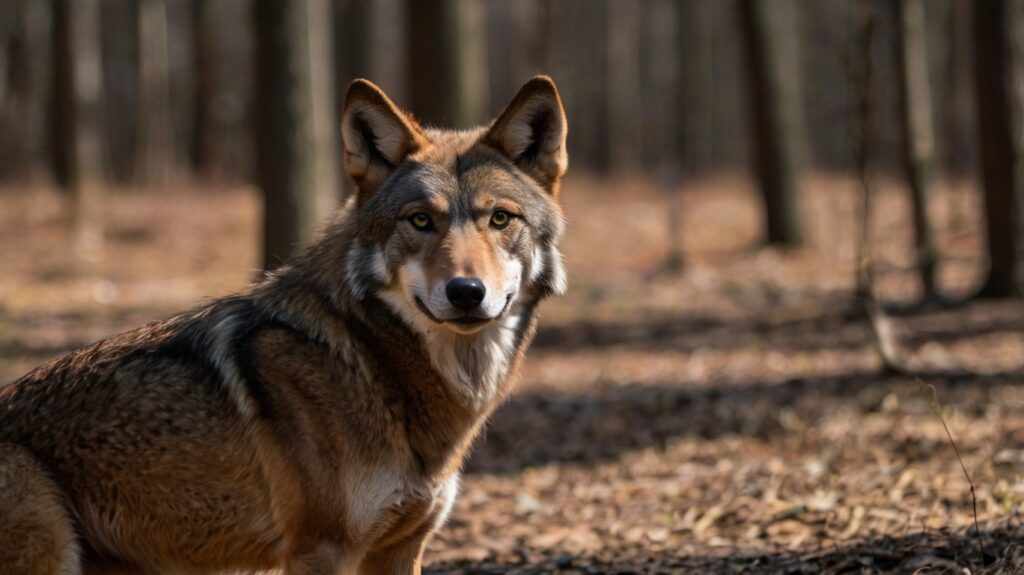Table of Contents
- Introduction
- Physical Characteristics
- Habitat and Range
- Diet and Behavior
- Conservation Status
- Threats to Survival
- Red Wolf Recovery Program
- Conclusion
- FAQs
Introduction
The Red Wolf (USA), scientifically known as Canis rufus, is one of the most endangered canid species in the world. Native to the southeastern United States, this elusive predator has faced severe population declines due to habitat loss, hunting, and hybridization with coyotes. Today, conservation programs strive to protect and reintroduce this species into the wild.

Physical Characteristics
The Red Wolf (USA) is smaller than the gray wolf but larger than a coyote, with distinctive features:
- Size: 4–5 feet long (including tail), 50–85 lbs in weight.
- Color: Reddish-brown fur with black markings on the back and tail.
- Ears & Snout: Broader than a coyote’s, with a more wolf-like appearance.
Habitat and Range
Historically, Red Wolves roamed across:
- Southeastern U.S. (Texas to Florida, up to Pennsylvania).
- Preferred Habitats: Swamps, forests, and coastal prairies.
Today, their wild population is restricted to North Carolina’s Albemarle Peninsula due to conservation efforts.
Diet and Behavior
- Diet: Primarily small mammals (rabbits, rodents, deer), supplemented by birds and reptiles.
- Hunting Style: Nocturnal and solitary, though they may form small packs.
- Social Structure: Family-based units with a breeding pair and offspring.
Conservation Status
- IUCN Status: Critically Endangered.
- U.S. Endangered Species Act: Listed as endangered since 1973.
Threats to Survival
Major threats include:
- Habitat Destruction (urbanization, agriculture).
- Hybridization with Coyotes (leading to genetic dilution).
- Human Conflict (hunting, vehicle collisions).
Red Wolf Recovery Program
Led by the U.S. Fish and Wildlife Service (USFWS), this initiative involves:
- Captive Breeding Programs (zoos and wildlife centers).
- Reintroduction Efforts (North Carolina).
- Public Education to reduce human-wolf conflicts.
Conclusion
The Red Wolf (USA) remains a symbol of wildlife conservation challenges in America. While its population is critically low, dedicated recovery programs offer hope for its survival. Continued habitat protection and public awareness are essential to ensure this species does not vanish forever.
FAQs
1. How many Red Wolves are left in the wild?
As of recent estimates, fewer than 20 pure Red Wolves exist in the wild, mostly in North Carolina.
2. What is the difference between a Red Wolf and a coyote?
Red Wolves are larger, with broader snouts and reddish fur, while coyotes are smaller with grayish coats and pointed features.
3. Are Red Wolves dangerous to humans?
No, Red Wolves are shy and avoid human contact. There are no recorded attacks on humans.
4. How can I help protect Red Wolves?
Support conservation organizations, advocate for habitat protection, and spread awareness about their plight.
5. Why are Red Wolves important to the ecosystem?
As apex predators, they help control prey populations, maintaining ecological balance.
